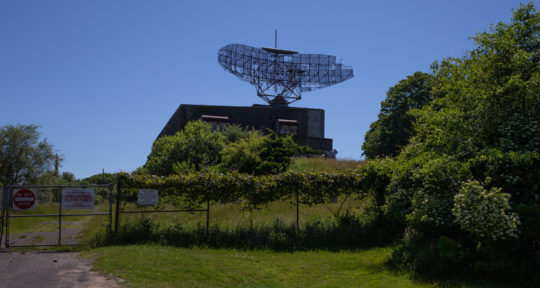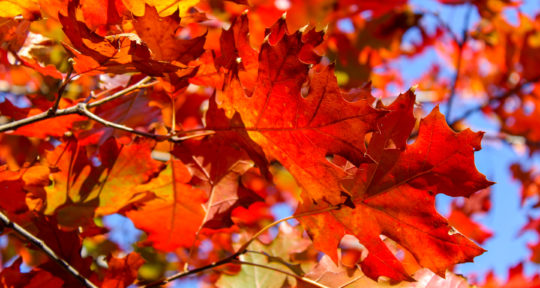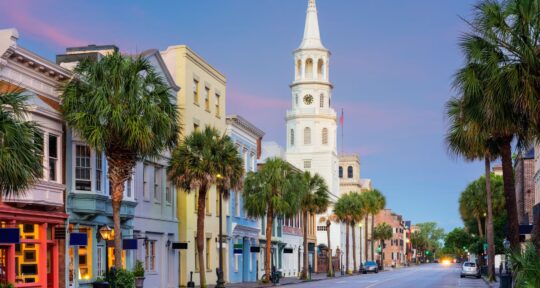Architects who design prominent buildings get all the glory. Glittering skyscrapers and gilded age mansions practically demand that we pay attention to them. The job of a landscape architect is no less important in setting the tone for community spaces—but their contributions are often easy to underestimate or overlook all together.
Prussian-born Adolph Strauch studied gardening and landscape design in Europe and established his reputation in the U.S. by designing private gardens and parks in southern Ohio. When he became superintendent of Cincinnati’s Spring Grove Cemetery in 1855, Strauch transformed the run-down, 10-year-old burial ground into a scenic oasis named for its natural springs and old-growth groves. Strauch’s work drew praise from the “father of American landscape design” himself, Frederick Law Olmsted, who designed New York City’s Central and Prospect parks along with Calvert Vaux.
I visit Spring Grove on a misty, gray day in late December. It will be weeks before I first hear the word “coronavirus,” and months before I’m quarantined in my New York City apartment. But history is full of plagues and pandemics; disease and death are the inescapable dues we pay to live a life. From the beginning until the end of time, humans will have devised countless ways to honor the spirits of departed loved ones and deal with the physical bodies they leave behind.
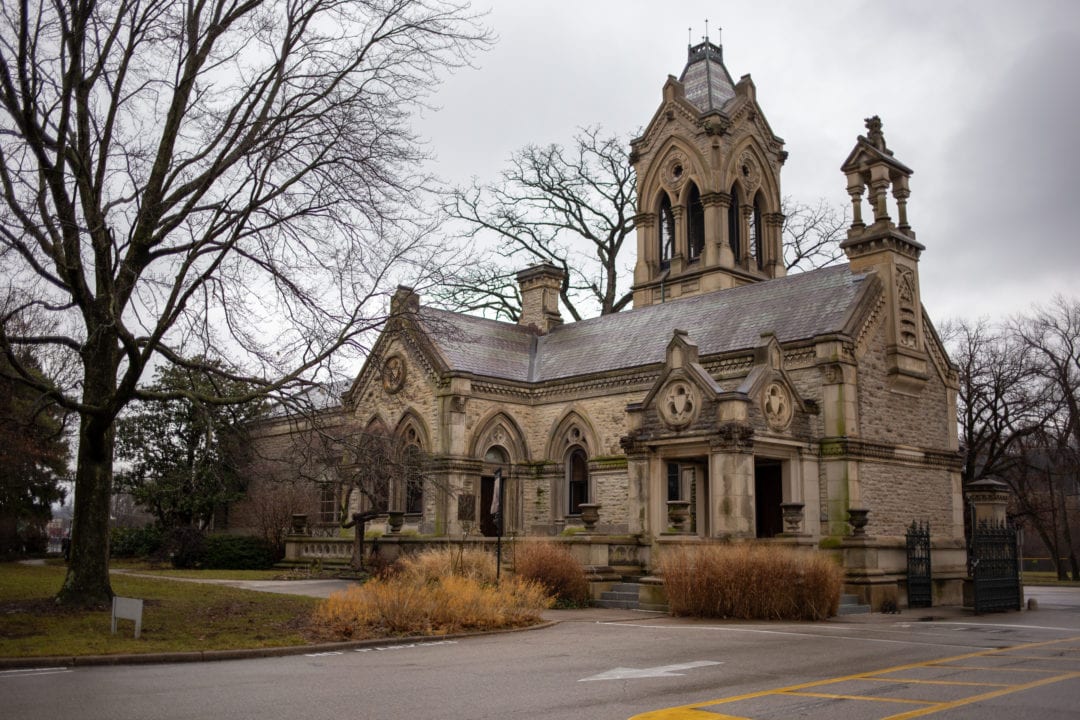
An epidemic
When a cholera epidemic reemerged in Cincinnati in the 1830s and ‘40s, church burial grounds quickly reached capacity and maintenance efforts lagged. In 1844, members of the Cincinnati Horticultural Society formed a cemetery association to address the concerns of citizens increasingly distressed by the lack of suitable interment options.
Society members traveled around the U.S. and Europe, gathering inspiration from rural cemeteries in New England and Paris, France. They implemented what they had learned and established Spring Grove on several hundred acres just north of the epicenter of Cincinnati—close enough to the city that families could visit, but far enough to remain safe from future urban expansion.
The first interment at Spring Grove occurred on September 1, 1845. At the opening ceremony, the founders “publicly proclaimed their hope that the natural setting would be a contemplative atmosphere conducive to consolation, commemoration, and education.” They may have had the best of intentions, but it wasn’t until Strauch took the helm a decade later and introduced his visionary landscape design ideas that the burial ground really came to life.
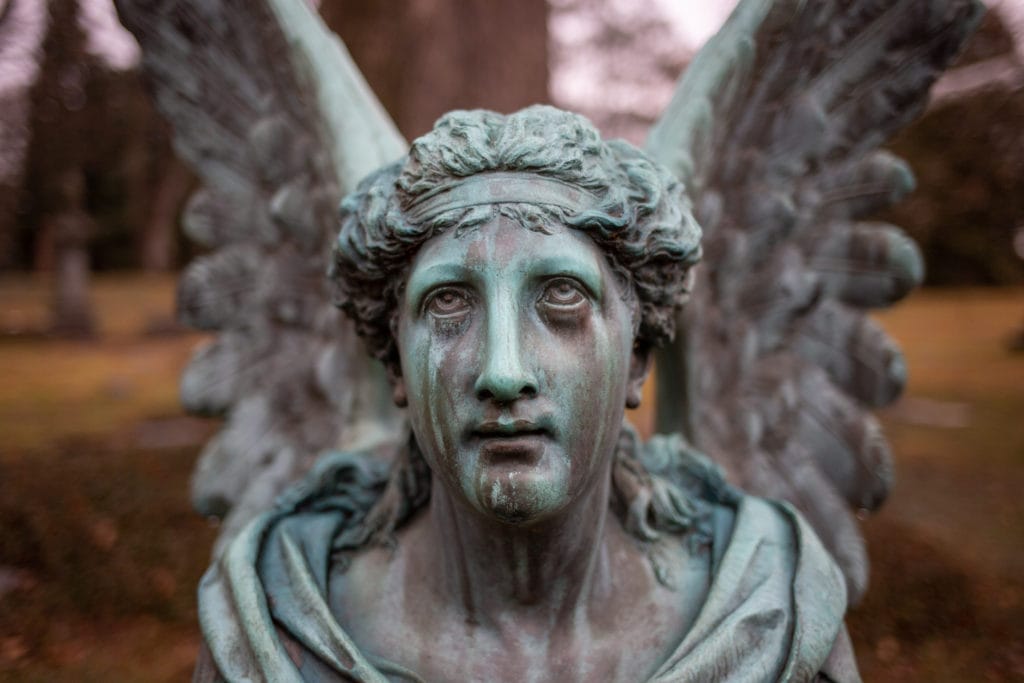
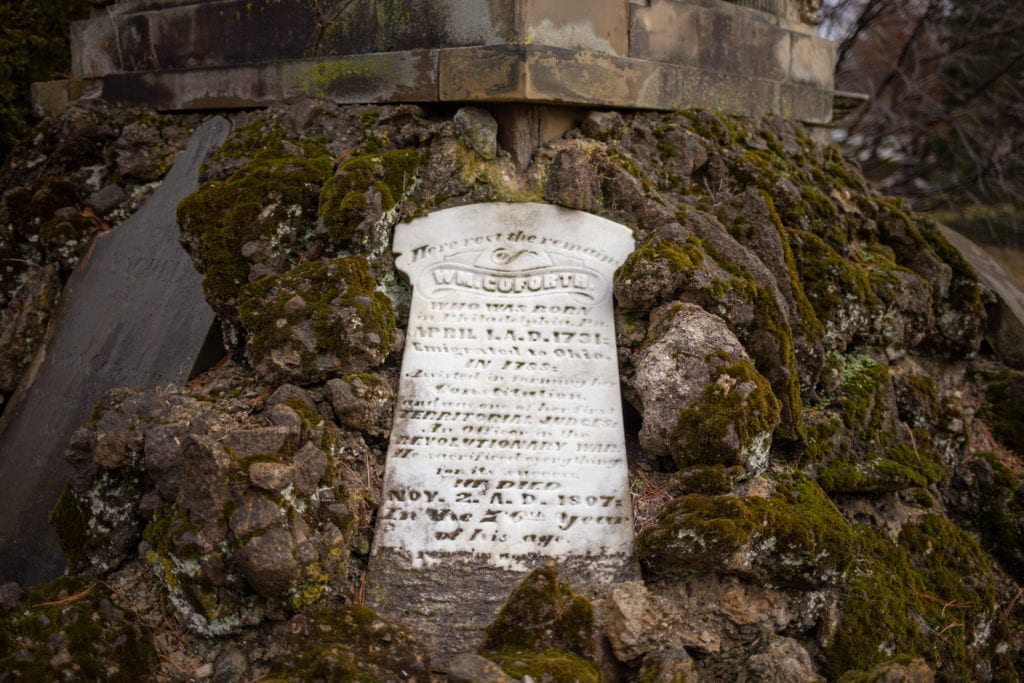
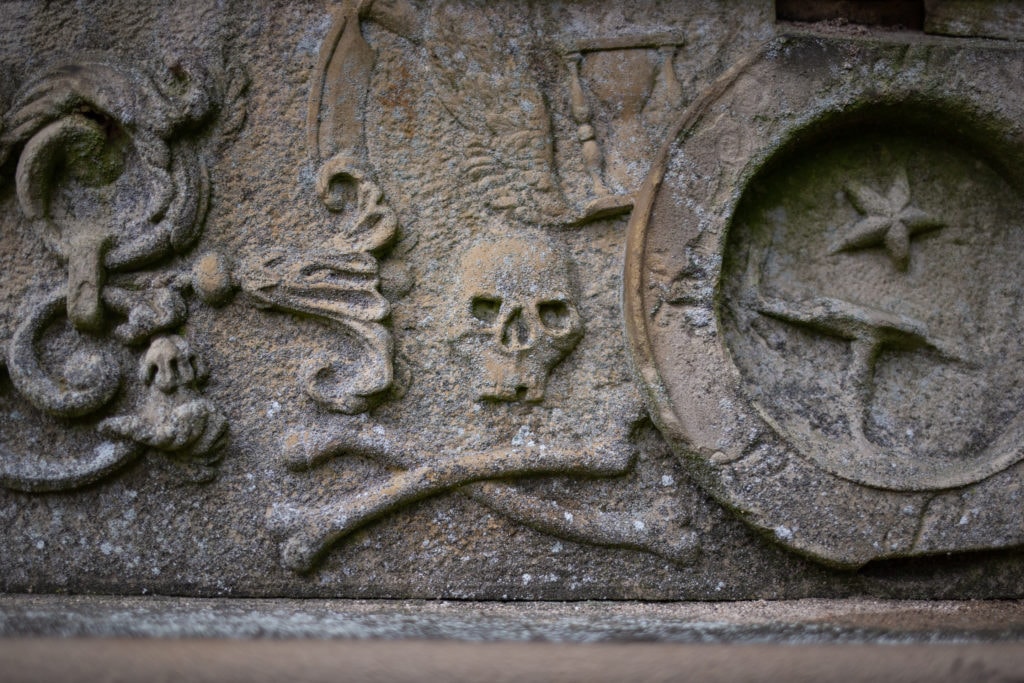
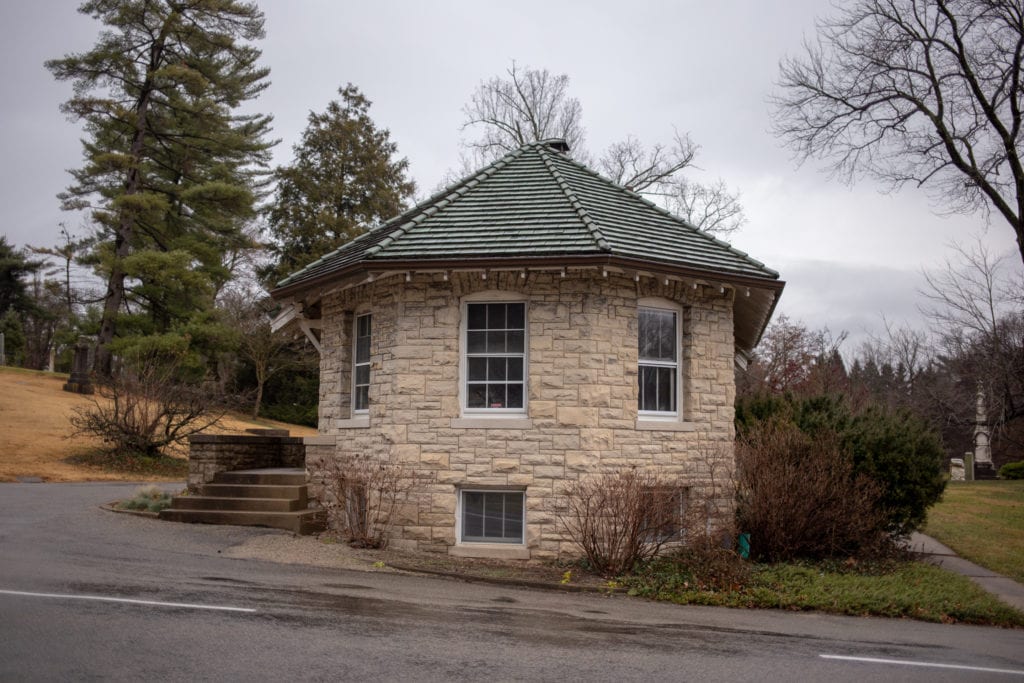
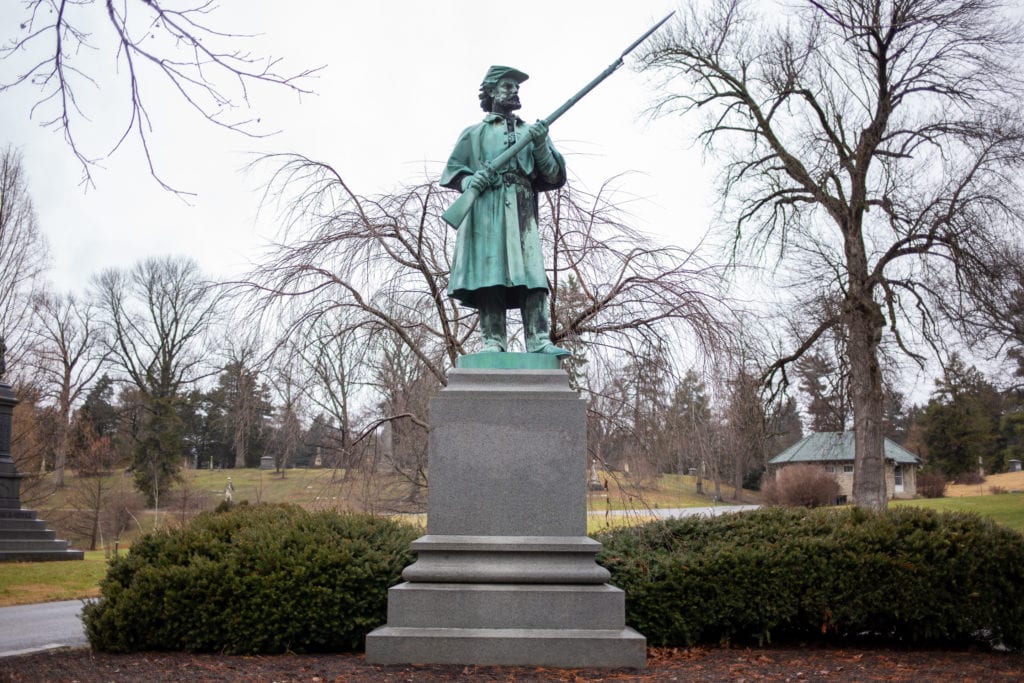
Natural landscape
Death may seem as if it’s the main event at Spring Grove and other cemeteries, but even among the barren trees it’s easy to spot signs of life: Stark white swans swim alongside iridescent mallards in one of Spring Grove’s several lakes, towering evergreens defy the muted winter color palette, and a group of men in uniform gathers near the Civil War section, readying themselves for a reenactment.
Strauch was so good at his job that his hard work may seem invisible to most visitors. He set aside a small forest, referred to as a “haunt of nature untouched,” that still remains free of burials and monuments. More than a hundred years after his death, Spring Grove still follows the principles set forth by Strauch as they develop new sections of the property, making sure “the lawn plan blends harmoniously into the natural landscape,” according to an informational brochure.
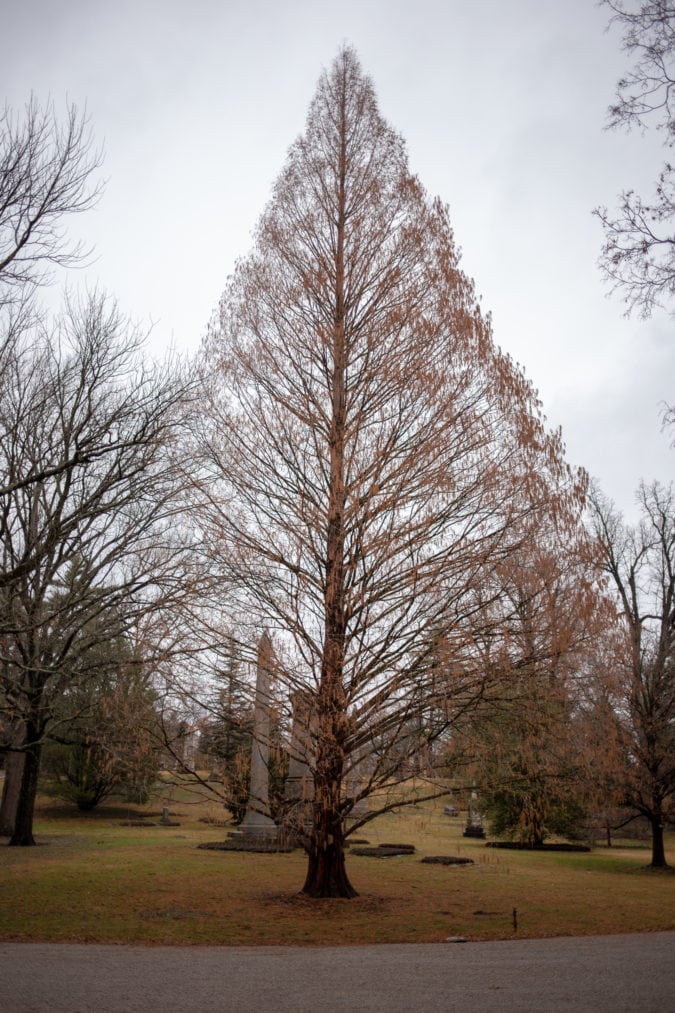
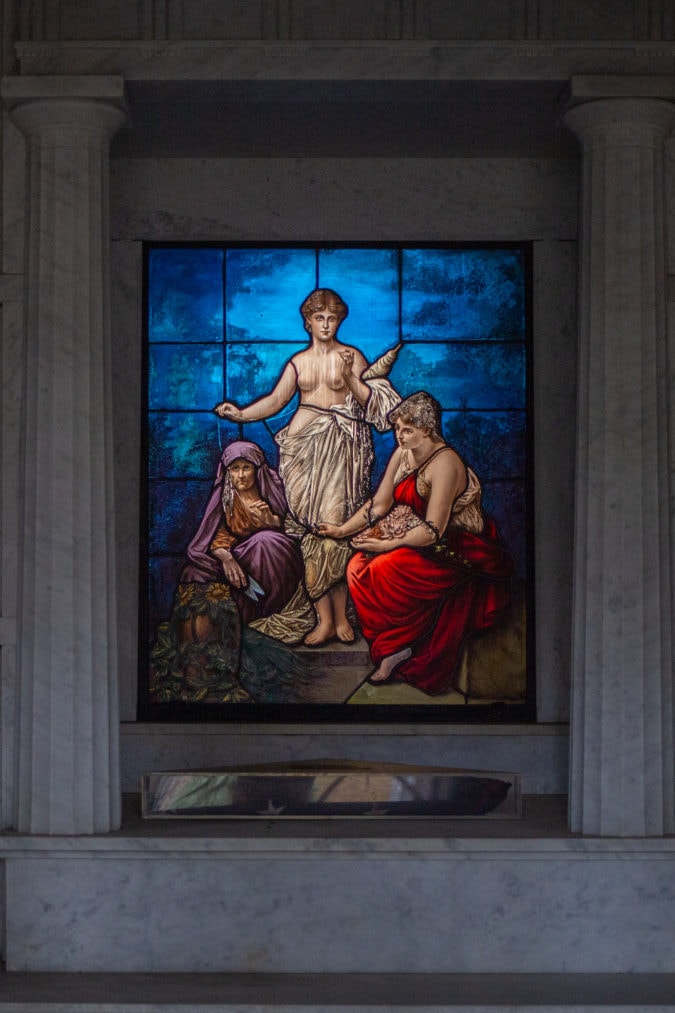
In 1987, the cemetery—the third largest in the U.S.—officially changed its name to Spring Grove Cemetery and Arboretum. Today, its 733 acres are populated with an extensive collection of native and exotic flora, including at least 500 species of woody plants and 1,000 trees, shrubs, annuals, and perennials labeled for research purposes. “The current horticulture staff is constantly finding new and unique species to add to the collection,” says Wendy Huang, Spring Grove’s special events coordinator. “When new sections are developed, trees and shrubs are planted first, then the burial spaces are designed around the plants.”
According to Huang, Spring Grove has 27 state champion trees, including the largest in Ohio, and one national champion tree (the largest in the nation). Tree nominees are judged on trunk circumference, vertical height, and crown spread. Today the cemetery’s collection, which includes buckeye, pine, elm, oak, bald cypress, and several non-native trees, “serves as a living laboratory where universities, nurseries, and growers bring new plants for horticultural research,” Huang says.
Spring Grove also “employs a collections curator, has substantial educational programming, collaborates with other arboreta, publicizes its collections, and actively participates in tree science and conservation,” Huang says.
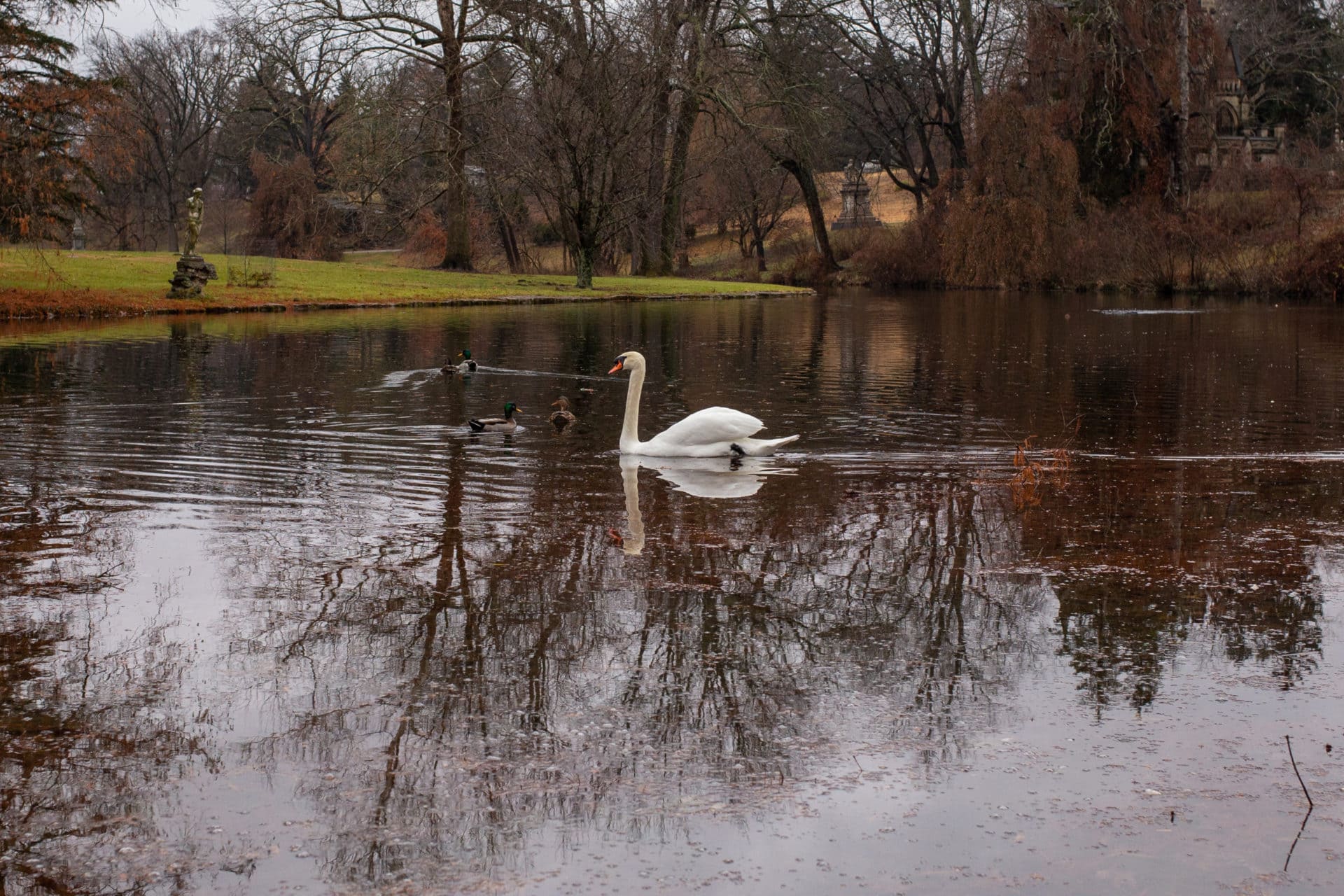
Monuments and mausoleums
The monuments and mausoleums dotting the grounds of Spring Grove represent several eras and styles including an Egyptian-style pyramid, a sphinx, obelisks, and reproductions of classic European statues. John Robinson started the country’s first traveling circus in 1824; his mausoleum, a gothic version of the Sacré-Cœur Basilica in Paris, is also the final resting place of several circus members.
More than 20,000 people visit Spring Grove every year, not including those attending a burial. “No other cemetery in the nation has a community outreach program like Spring Grove,” says Huang. To limit the spread of COVID-19, the cemetery has capped the size of funerals, visitation, chapel, and graveside services at less than 50 people for the time being.
Regular tours are on hold for now, but they include History and Heritage, Stately Trees, Spring Grove Avenue and the Gilded Age, Mysterious Monuments, Civil War, Patriots & Pioneers, Abolitionists of Cincinnati, Big Top Circus, How Cincinnati Has Changed the World, Presidential Connections, and Angels In the Grove.
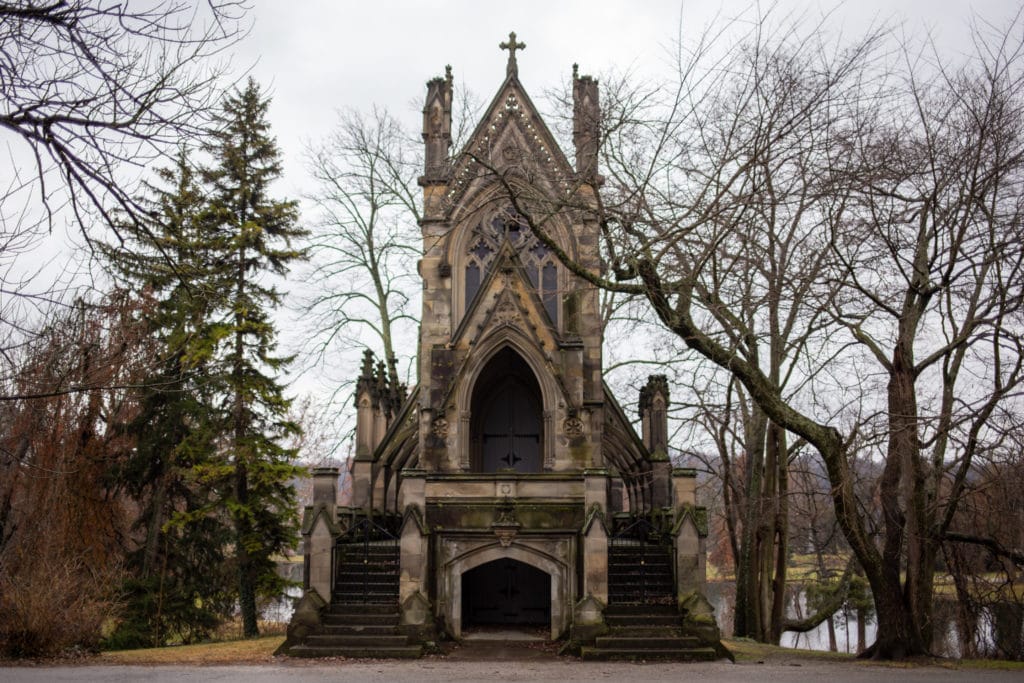
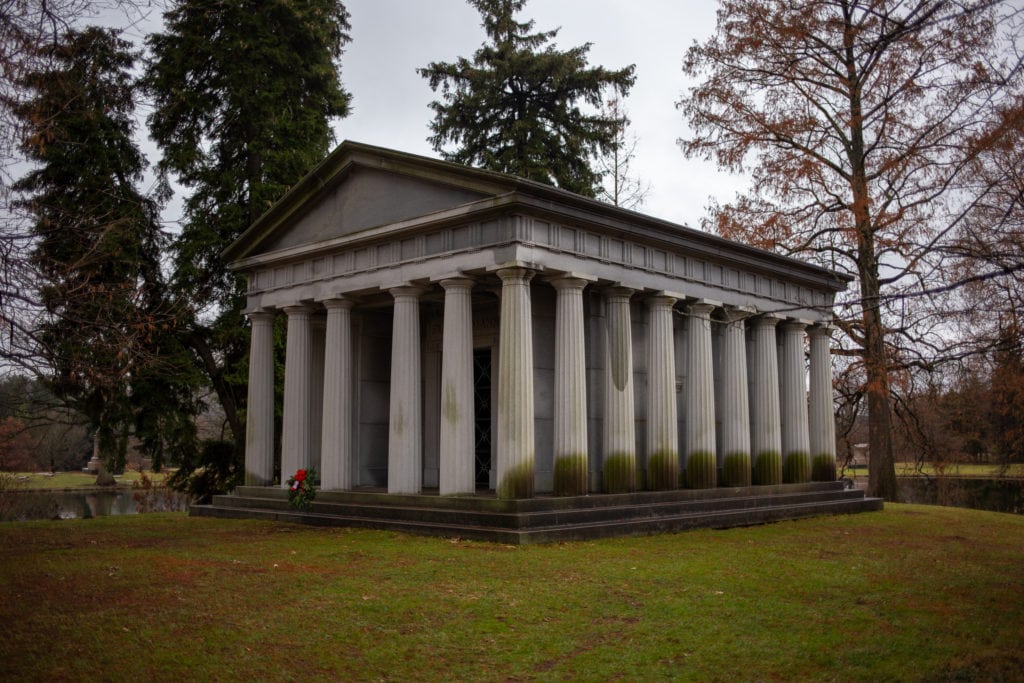
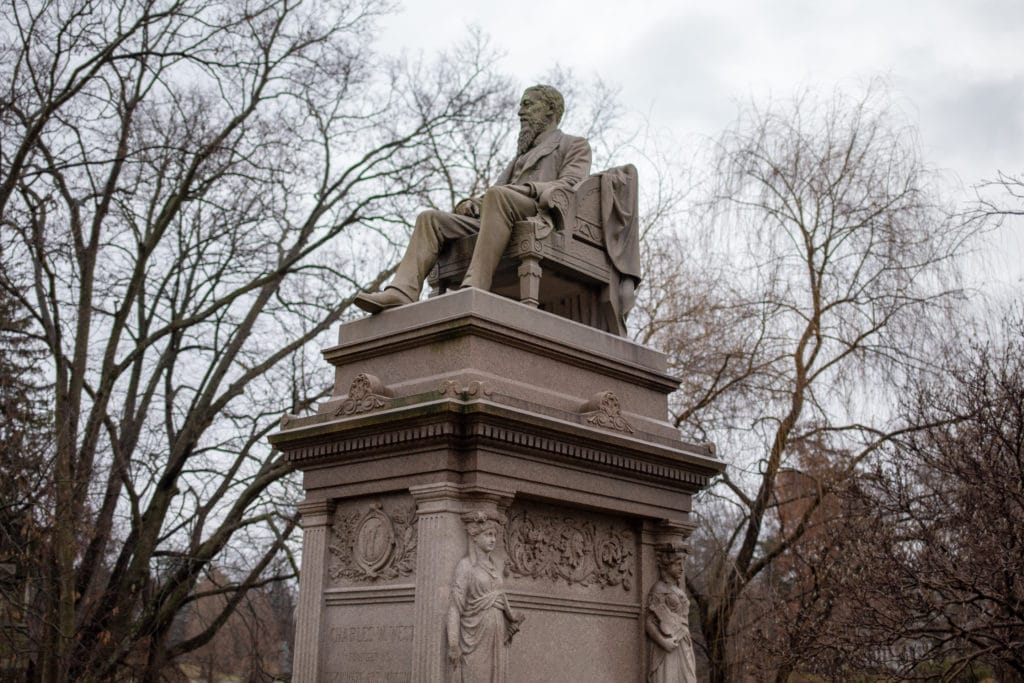
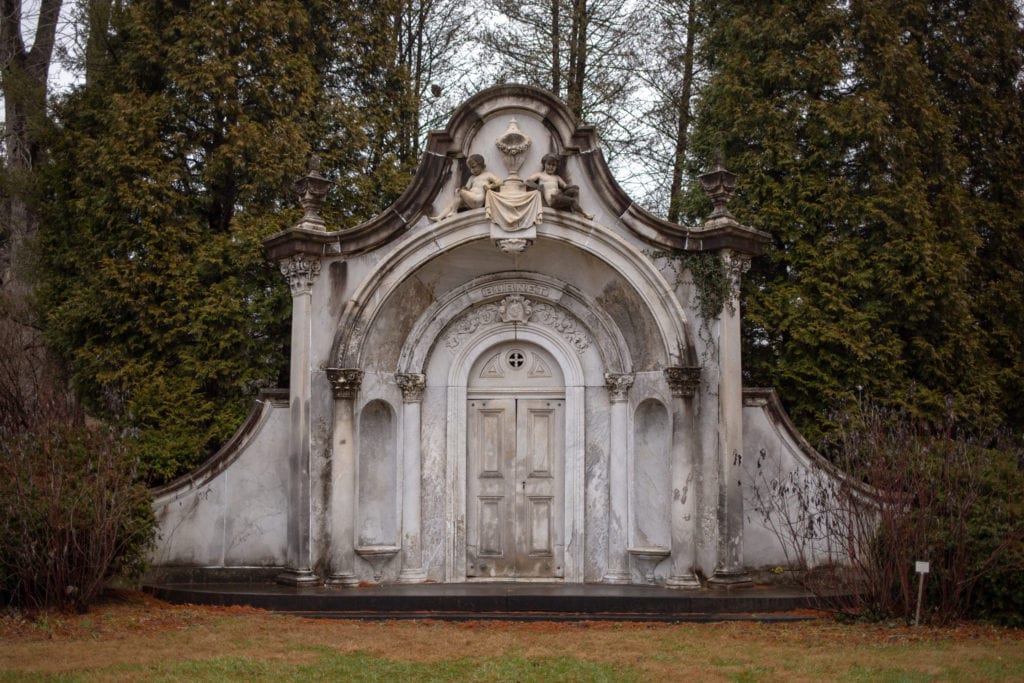
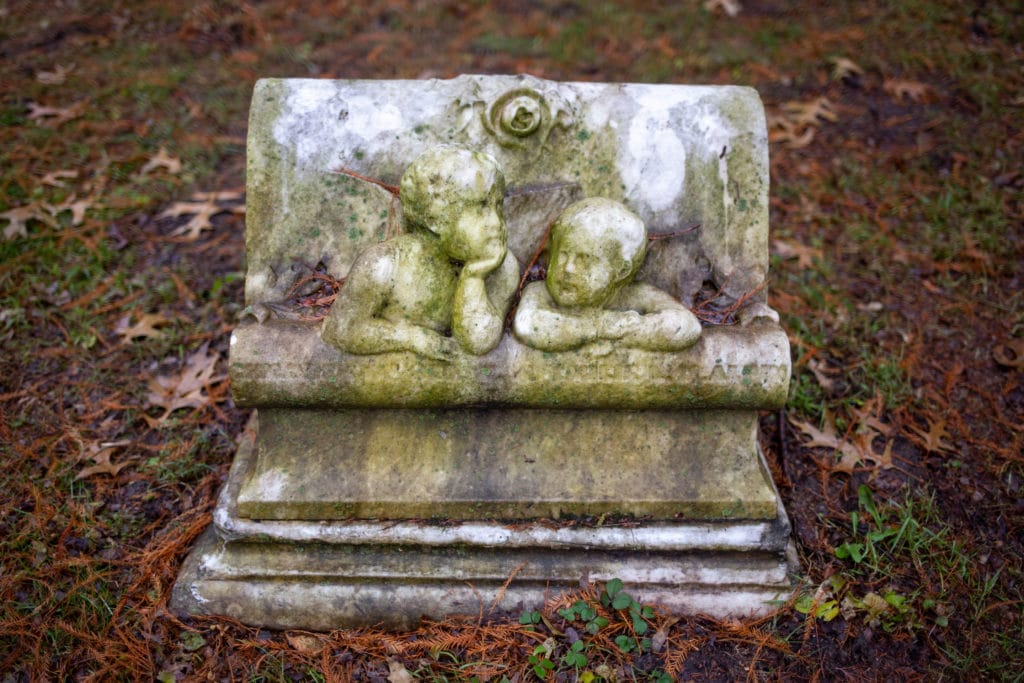
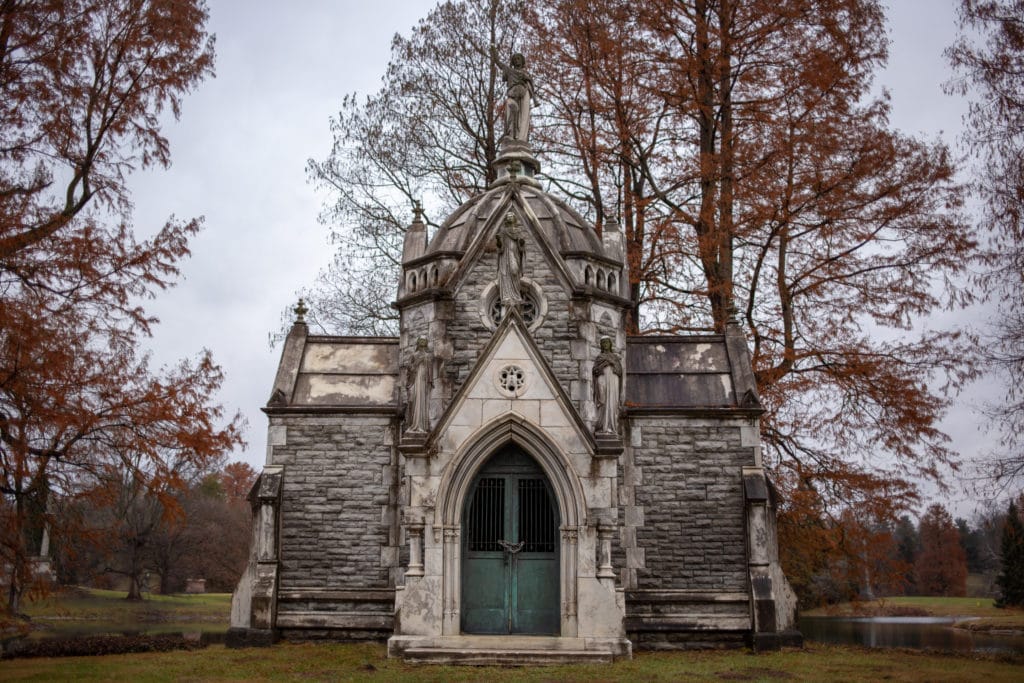
Even if you’re not looking for it, it’s hard to miss the Dexter mausoleum. The Gothic revival mausoleum and chapel was built for $100,000 in 1866 (more than $1 million today) and modeled after chapels in Paris and England. The private mausoleum features a marble interior, 12 catacombs, and a chapel with a 34-foot ceiling. Built by Julius and Edmund Dexter, who made Kentucky bourbon, the mausoleum was designed to include an elevator and stained glass windows, neither of which were ever installed due to financial issues.
There are several octagonal limestone shelter houses scattered around Spring Grove; built in the late 1800s and used by weekend visitors, the houses are no longer open to the public. The old administration building was built in 1863 and is open today as the cemetery’s historic office. A 1955 addition was designed by India Boyer, the first woman to pass Ohio’s architectural licensing exam.
“Death’s dusky hand“
According to Huang, as of March 4, 2020, there were 237,972 people buried at Spring Grove. Notable residents include prominent businessmen, elected officials, and soldiers. There are 40 Union generals and one Confederate general buried here alongside more than a thousand Civil War soldiers, most of whom died from wounds or disease in a nearby war hospital.
Julius Fleischmann worked as a clerk in his father’s yeast and distilling business; he became president of the company in 1905, in addition to being the Mayor of Cincinnati and owner of the Cincinnati Reds. He is interred along with his family in a neoclassical Doric temple—I’m drawn to it because of its resemblance to the Parthenon, and that’s not an accident. Modeled after the one in Greece, and made of Vermont granite, the Fleischmann mausoleum has 18-inch-thick walls, 26 columns, and a stained glass window depicting the three Fates.
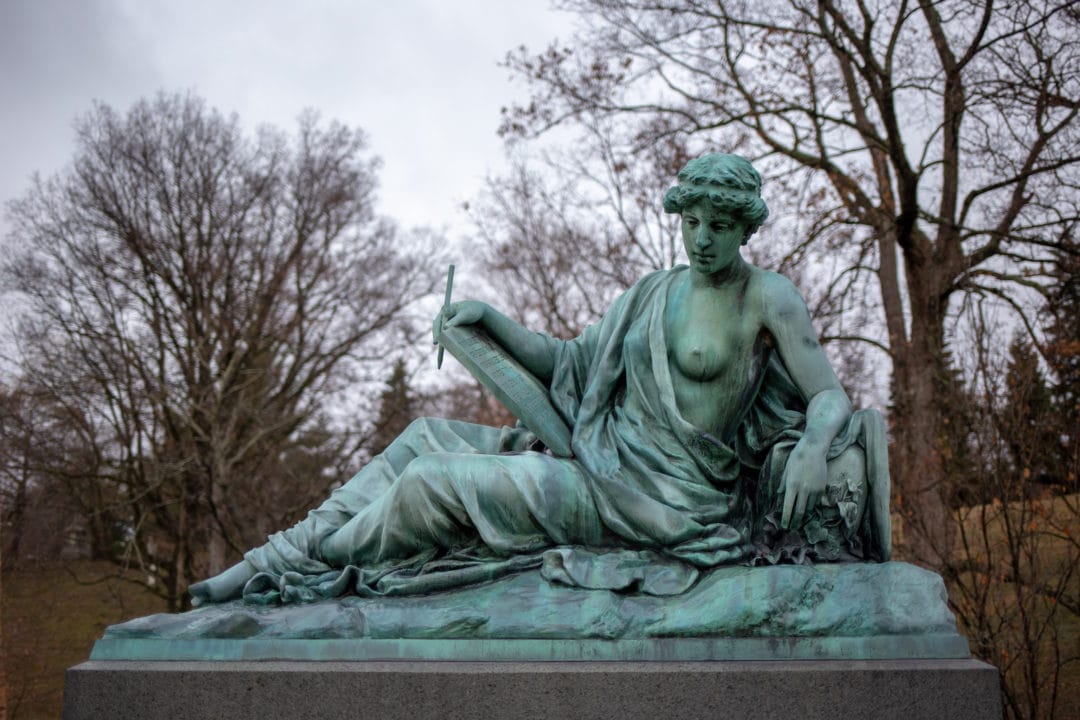
The founder of the Cincinnati Zoo, Andrew Erkenbrecher, also owned a starch factory and imported birds to help rid the city of a caterpillar plague; the zoo opened in 1875 with his bird collection as the main exhibit. Erkenbrecher’s grave is marked with a reclining bronze female figure; her tablet bears an inscription in German that translates to: “Though Death ends well all life’s distress / Yet life still shudders at Death’s approach / Life only sees Death’s dusky hand / And not the shining cup it bears.”

